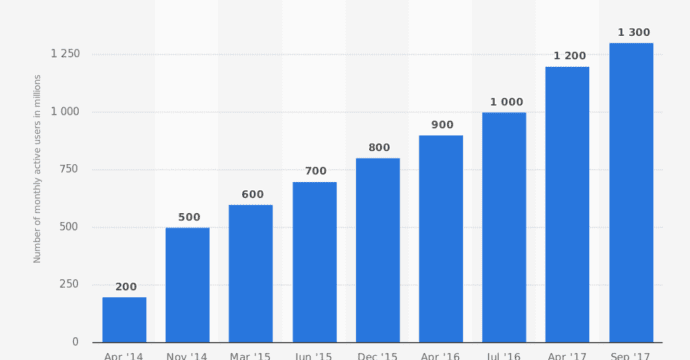Alistair Wragg, Communications Officer, worldsteel
14 February 2019
As much as I advocate for digital technology, it’s unlikely to ever replace the value of face-to-face meetings – at least not until holograms arrive. This was more than borne out during worldsteel’s steelComm-7 meeting in November of global steel industry communications professionals.
We explored digital trends, the likely challenges ahead and potential responses with both steel industry and external speakers providing insights on their current and prospective activities in this ever-evolving landscape.
This post-event blog looks at 10 digital trends we should keep an eye on in 2019 whilst sharing a few examples of steel companies already leading the way.
1. Messaging apps and the rise of the chatbots…
Don’t be worried, it’s highly unlikely we’ll be chatted by bots to our demise. Instead AI-powered language learning promises to greatly enhance the digital service experience.
Why is this important? Well for one, you’d be in-sync with your customers and the general growth in the uptake of instant messaging apps. Facebook Messenger alone now has over 1.3 billion active monthly users worldwide.

But chatbot technology offers the availability of cost-effective 24hr support, and proactive, not just reactive, customer interactions. Say a problem occurs along the production line resulting in delayed orders – your chatbot could notify customers and answer questions instantly, pre-empting queries before they reach you and releasing pressure on other channels.
Steel companies are already embracing chatbot-based technology such as voestalpine’s Jobbot, which is helping people to discover career opportunities.
Interest in chatbots has increased over the last 5 years with Google Trends showing a marked increase in search volume. It’s therefore worth looking at the opportunities they might present.
trends.embed.renderExploreWidget(“TIMESERIES”, {“comparisonItem”:[{“keyword”:”chatbot”,”geo”:””,”time”:”2013-02-01 2019-02-13″}],”category”:0,”property”:””}, {“exploreQuery”:”date=2013-02-01%202019-02-13&q=chatbot”,”guestPath”:”https://trends.google.com:443/trends/embed/”});
2. Platform migration and demographic shifts
Facebook remains king in terms of audience size with 2 billion monthly active users, but they’ve seen slower growth in users across most age brackets except the over 55’s. Counter to this runs Instagram, which has seen growth in usage across all age groups, especially younger people, with their most active users in the 18 to 34 age range.
If you’re looking to build relationships with the customers or decision makers of the future, this is worth thinking about. Severstal has already decided to jump in and has built up an impressive selection of steel snaps.
3. Video made easy
Video content is widely marked as the most effective form of media for both engagement and conversion. And CISCO has projected that globally, video will account for over 80% of all internet traffic next year.
Tata Steel Ltd’s Steelie Award-winning #DoorsOfIndia film is a great example of the potential of video, with over 65k views on YouTube alone.
Making video in-house is perhaps more difficult and resource intensive than creating traditional forms of content, especially for smaller teams. But it’s something we communicators need to gravitate toward. There are tools popping up seeking to help – WIBBITZ or Magisto are two such examples.
Live-video-streaming is also set to take off in 2019 with a suggested 15-fold growth over the next half-decade. Steel companies are onboard with a notable example being the recent live-broadcasting of thyssenkrupp AG’s Annual General Meeting for investors.
4. Paid content pays off
Organic reach has been in decline for some time on Facebook. But the algorithm change last year saw it drop off the proverbial cliff. There’ll be many factors but, essentially, content that drives active engagement via comments, shares and reactions is prioritised in the news feed over more passive engagement such as clicks and views. This means more personal and people-focused content.
This may be less of a problem for Tenaris, whose ‘One Mill, One Fan Page’ approach to Facebook has reaped the benefit of community-based pages. Active engagement generated this year came to over 450K interactions across 14 pages!
On the other hand, Twitter remains steady and LinkedIn has, at least for worldsteel, seen the strongest consistent organic performance of any channel. And with the introduction of native video added last year, it has become a firm favourite of mine.
What should all this mean? If you haven’t already done so, start re-evaluating the weight and energy you put into your organic and paid efforts.
Raising organic activity might not see any clear benefit and paid promotion is now all but essential on some channels. Most importantly, what’s your aim? Is it clicks or engagement? Or, as is likely to become increasingly important, the conversion rate and the actual social media ROI?
5. Integrated analytics are critical
Our holistic digital strategy encompasses nearly all areas of activity, from corporate to crisis communications, and from employee to community communications. — Mara Ares, Corporate Branding Manager, Ternium
Along with this shift comes a myriad of platforms and handles to track, distil and then clearly report upon. A comprehensive and user-friendly analytics and reporting system is vital for this, and there’s plenty of off-the-shelf options.
But you’ll also want to be able to build both an overall picture and to segment the data. To see not only the individual channel or campaign results, but how they overlap – and crucially how you, and perhaps even your competitors’ various organic and increasingly paid activities compare in one space. So, a bespoke solution might be required for the most active steel companies.
Let us know your thoughts on these 5 trends, and which you see as the most important. Part two will follow next week.